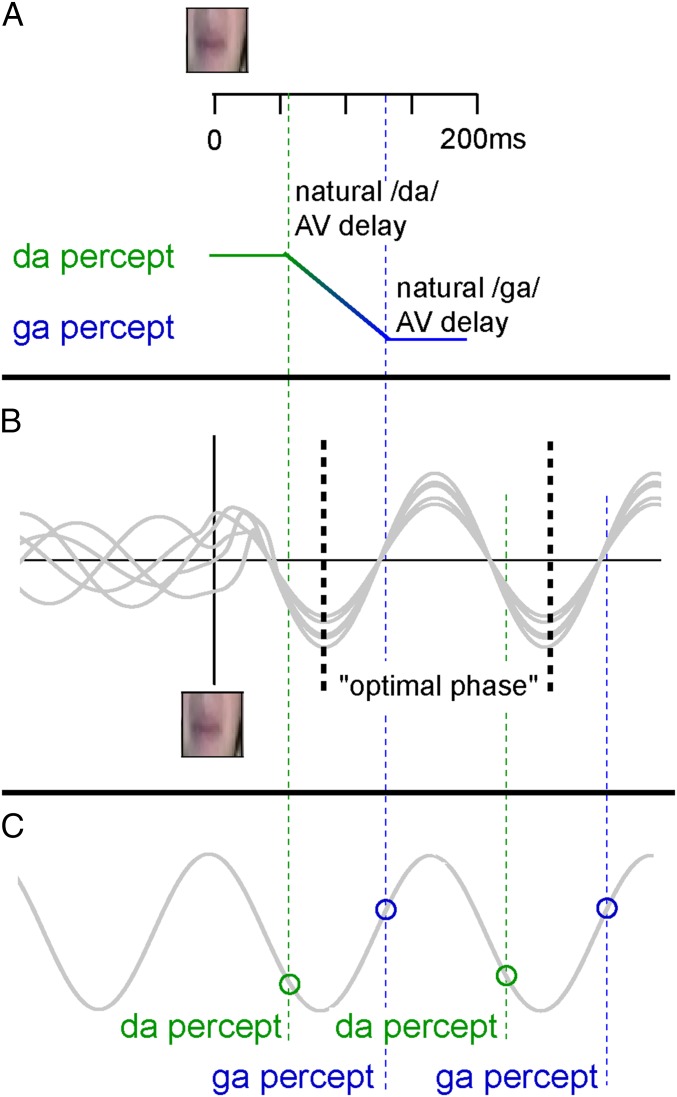Fig. 4.
Proposed mechanism for theta phase sensitization. (A) Dependent on the natural visual-to-auditory (AV) delay, voiced-stop consonants are identified as a /da/ or a /ga/ after presenting the same visual stimulus (4). (B) When visual speech is presented, ongoing theta oscillations synchronize, creating an optimal phase (black dotted line) at which stimuli are best-processed. The phase at which a /da/ or a /ga/ in natural situations is presented is different (green and blue lines, respectively), caused by the difference in visual-to-auditory delay. (C) Syllable perception is biased at phases at which /da/ and /ga/ are systematically presented in audiovisual settings even when visual input is absent.

